The Olfactory Dossier emerges here as a natural unfolding of the Stool Dossier, a new sensory axis of the Living Archive, where listening and smell become ways of seeing.
The chair in front of the painting is the starting point: the act of sitting as a ritual of prolonged, almost meditative observation—a bodily lens. Just as the “stool” invited attention to the body, the chair now invites smell as expanded memory, synesthesia as a method of reading the painting.
“Olfactory Dossier / Aromas as Portals of Memory”—part of the cycle “Between Matter and Gesture”:
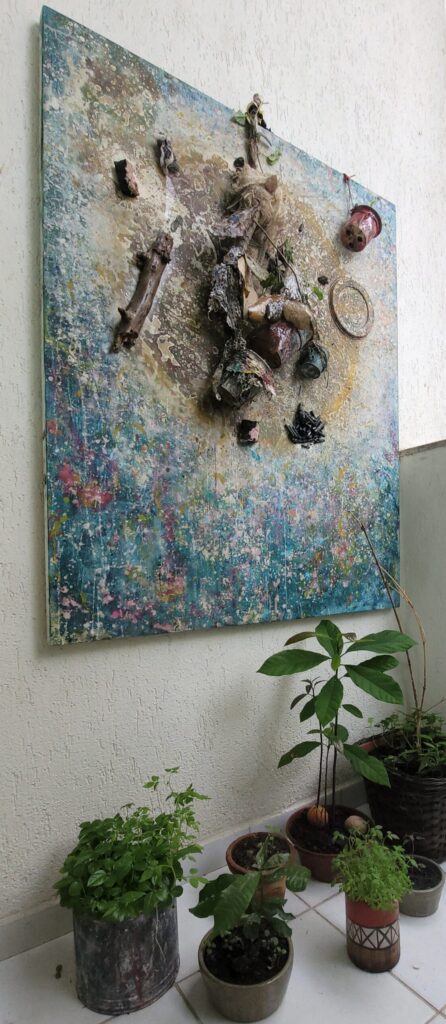
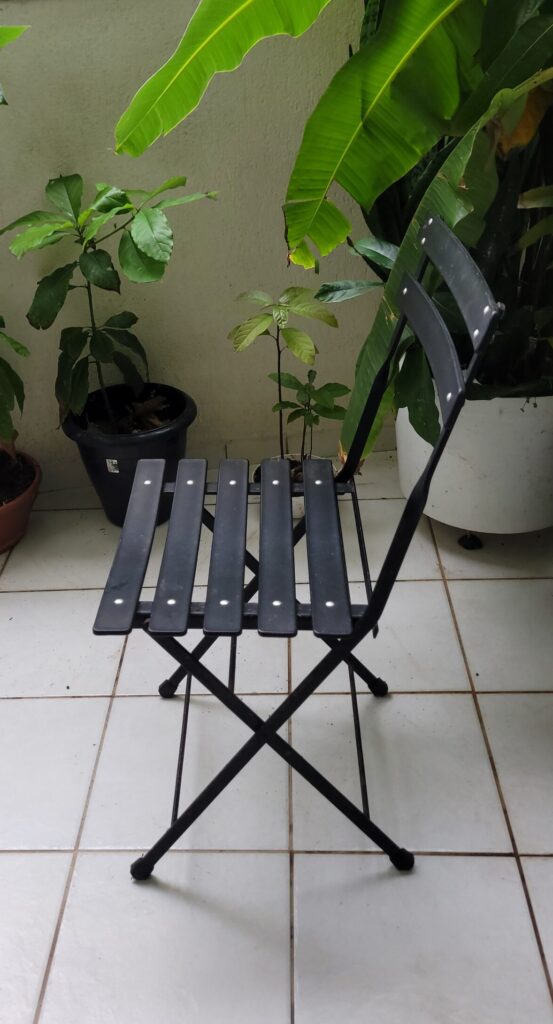
There is a chair facing the painting.
Not a museum bench, not an altar seat, but a threshold.
A place where stillness becomes perception.
Here, sight opens into scent. The air thickens.
Lavender, marjoram, frankincense, verbena, musk —
the atmosphere itself begins to remember.
I realize now that to see a painting, one must sit.
Not just glance, but breathe with it — allow the aroma of pigments,
of the earth and oil, of the human hand, to enter the lungs.
When I sat before Luxúria de Orvalho — even in the smallest room,
even seated on the bathroom vessel — the act of stillness
revealed layers I had never seen.
The eye slowed down to the rhythm of smell.
Smell is the geometry of memory.
Each fragrance is a chemical syntax,
an aromatic constellation that travels invisibly through air and time.
To inhale musk or verbena is to recall the topology of other places —
the meditative temple in São Paulo,
the ayahuasca ceremony perfumed with frankincense,
the hands of friends sharing drops of oil in Alto Paraíso,
the Shipibo maestros sprinkling agua florida
and blowing tobacco smoke as prayer —
Nicotiana rustica as coded wind.
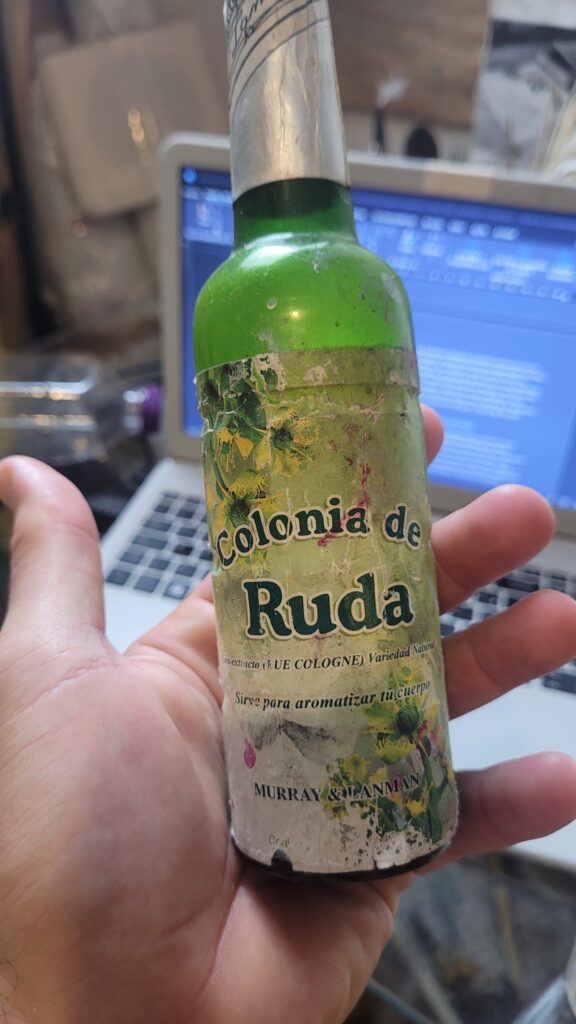

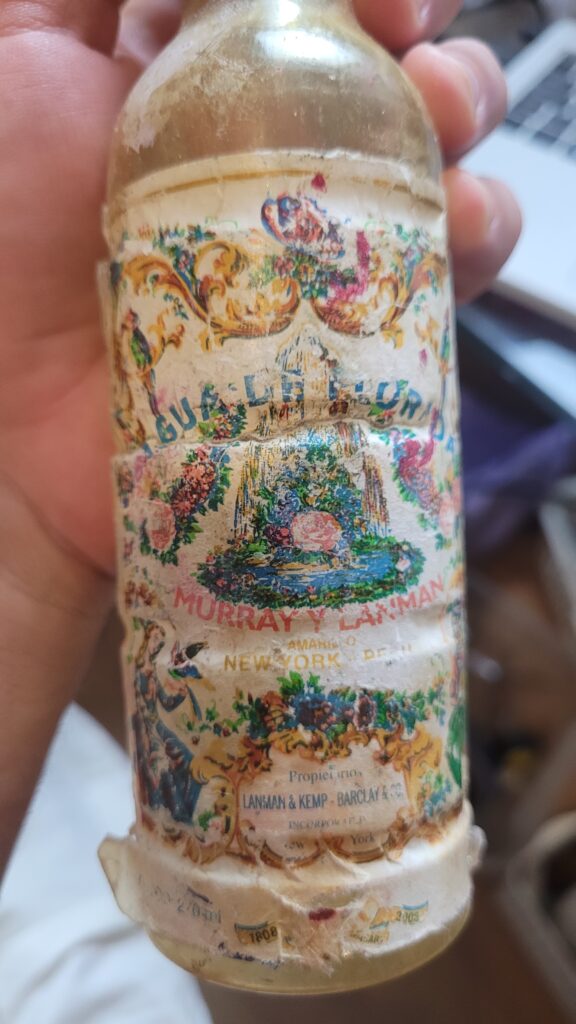

A bottle of Ruda cologne macerated with herbs,
a violet Lavender concentrate from a mother’s gift,
a relic of Agua de Florida,
each vessel holds a time crystal.
They are small archives,
olfactory paintings whose molecules continue to live,
to mutate, to whisper back.
Just as Pollock’s Lavender Mist became digital in my early research —
a web of paint dissected and reanimated in Flash —
today, the perfumes become data of breath.
They are codes in vapor form,
interfaces between body, machine, and plant.
What we call “scent” is simply another language of transmission,
another way the cosmos teaches memory.
Perhaps every painting, every shelter, every ritual,
must now have its own olfactory field —
a companion atmosphere —
so that perception becomes multisensory, cosmotechnical, and intimate.
Aromatic Constellation / Field Notes
- Lavender (Coala, 1989–2025) – domestic aura; a bridge between memory and cleansing.
- Marjoram – herb of patience and silent strength.
- Frankincense – conductor of the unseen, resin of prayer and intelligence.
- Verbena – solar fragrance, equilibrium of nervous currents.
- Musk – sensual grounding, animal-electric pulse of the forest.
- Agua de Florida – shamanic archive of the Americas; water of spirit and ceremony.
- Colonia de Ruda – herbal shield; green frequency of protection.
- Nicotiana rustica – breath as ritual technology.
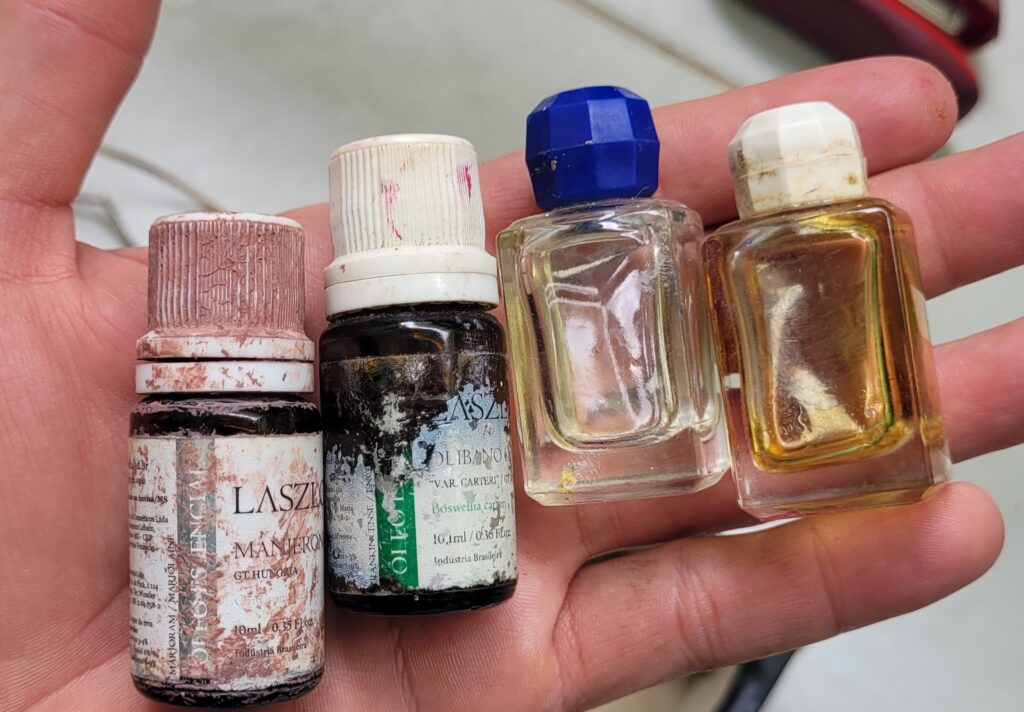
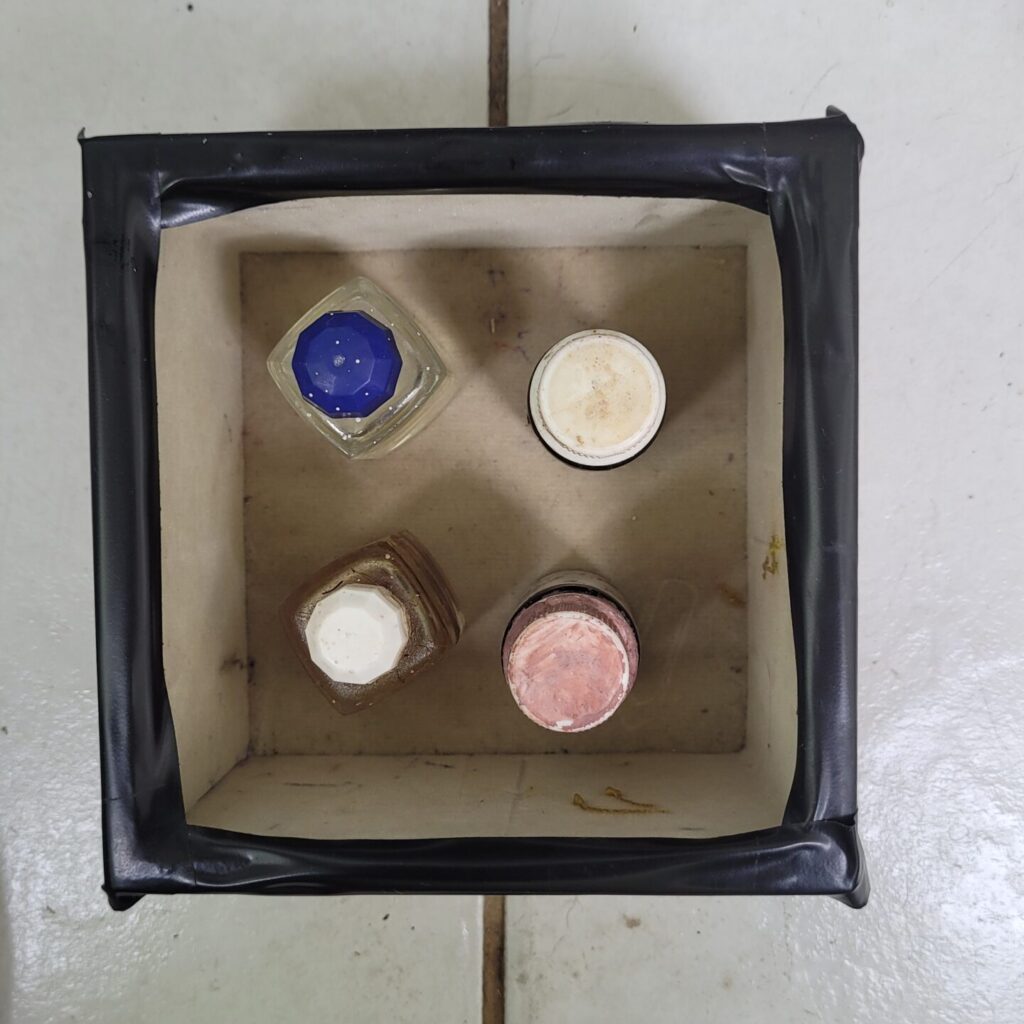
DOSSIÊ OLFATIVO / AROMAS COMO PORTAIS DE MEMÓRIA
O Dossiê Olfativo emerge aqui como um desdobramento natural do Dossiê Banquinho, um novo eixo sensorial do Arquivo Vivo, onde a escuta e o olfato se tornam modos de ver.
A cadeira diante da pintura é o ponto de partida: o ato de sentar-se como ritual de observação prolongada, quase meditativa — uma lente corporal. Assim como o “banquinho” convidava à atenção do corpo, a cadeira agora convida ao olfato como memória expandida, à sinestesia como método de leitura da pintura.
“Dossiê Olfativo / Aromas como Portais de Memória” — parte do ciclo “Entre a Matéria e o Gesto”:


Há uma cadeira diante da pintura.
Não é um banco de museu, nem um trono — é um limiar.
Um lugar onde o corpo aprende a ver pelo ar.
Aqui, o olhar se expande em olfato.
O ar se espessa.
Lavanda, manjerona, olíbano, verbena, almíscar —
o ambiente começa a lembrar.
Percebo agora que, para ver uma pintura, é preciso sentar-se.
Não apenas olhar, mas respirar com ela —
deixar que o aroma dos pigmentos, da terra e do gesto humano
entre nos pulmões.
Quando me sentei diante de Luxúria de Orvalho —
mesmo naquele espaço pequeno,
mesmo sobre o vaso, entre azulejos e ecos —
o ato de estar parado revelou camadas invisíveis.
O olho se moveu na velocidade do perfume.
O aroma é a geometria da memória.
Cada fragrância é uma sintaxe química,
uma constelação aromática que viaja pelo tempo e pelo corpo.
Inspirar o almíscar ou a verbena
é reabrir os portais de outros lugares:
o templo de meditação em São Paulo,
a cerimônia de ayahuasca guiada pelo olíbano,
as mãos amigas dividindo gotas em Alto Paraíso,
os maestros Shipibo borrifando água florida
e soprando o tabaco como reza —
Nicotiana rustica como vento codificado.
Um frasco de colônia de ruda macerada com ervas,
um concentrado de lavanda trazido por minha mãe,
um relicário de água florida antiga —
cada vidro é um cristal de tempo.
São arquivos mínimos,
pinturas olfativas cujas moléculas continuam vivas,
mutantes, sussurrando.
Assim como a Lavender Mist de Pollock tornou-se digital em meu início —
uma teia de tinta dissecada e reanimada no Flash —
hoje os perfumes tornam-se dados de respiração.
São códigos em estado de vapor,
interfaces entre corpo, máquina e planta.
O que chamamos de aroma é apenas outra linguagem de transmissão,
outra forma de o cosmos ensinar lembrança.
Talvez cada pintura, cada shelter, cada rito,
precise agora de seu campo olfativo —
uma atmosfera companheira —
para que a percepção se torne multissensorial, cosmotécnica e íntima.
Constelação Aromática / Notas de Campo
- Lavanda (Coala, 1989–2025) – aura doméstica; ponte entre memória e purificação.
- Manjerona – erva da paciência e da força silenciosa.
- Olíbano – condutor do invisível; resina de prece e inteligência.
- Verbena – perfume solar; equilíbrio das correntes nervosas.
- Almíscar – aterramento sensual; pulso animal-elétrico da floresta.
- Água Florida – arquivo xamânico das Américas; água de espírito e cerimônia.
- Colônia de Ruda – escudo verde; frequência vegetal de proteção.
- Nicotiana rustica – o sopro como tecnologia ritual.

Deixe um comentário